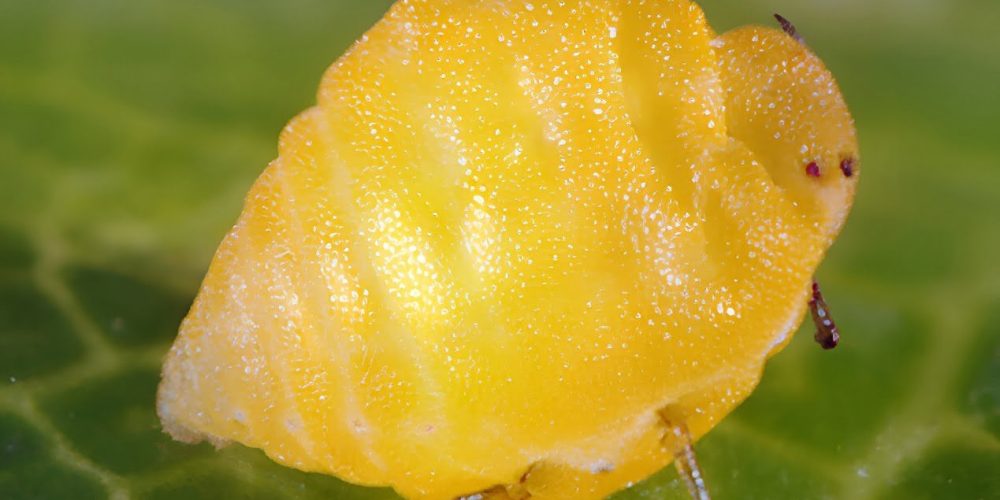Table of contents of the article
ToggleGrape phylloxera is one of the most dangerous pests that threaten grape fields, as it feeds on its roots and weakens them. In this article on your website, World of Plants, we will learn about methods of prevention and control.
Symptoms of Grape phylloxera
- Scientific name : Viteus vitifolia
- the family : Homoptera
- Large, fragile tubers rot due to microorganisms in the soil.
- Tuberculosis on the leaves and swelling of the leaf from the lower side to the upper side in the case of foliar phylloxera
- Root damage and complete death of the plant.
- Slow growth, as the plant stops growing.

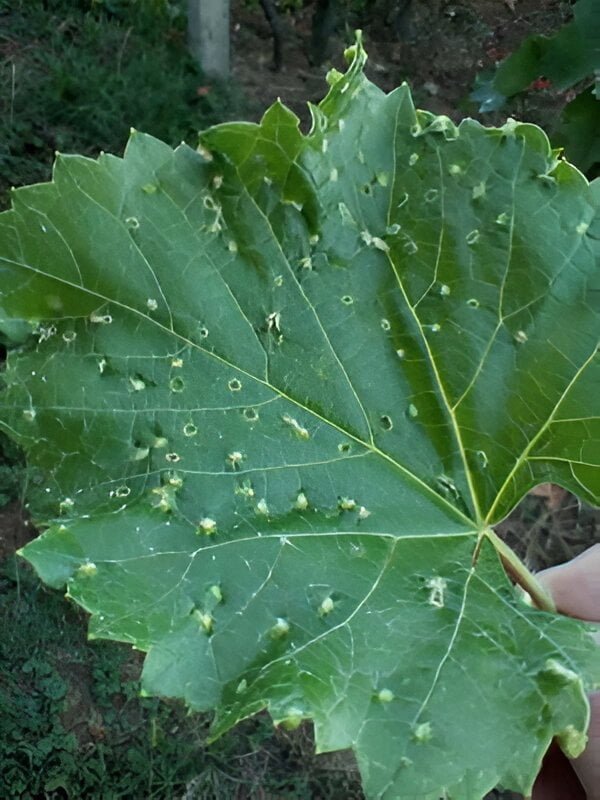
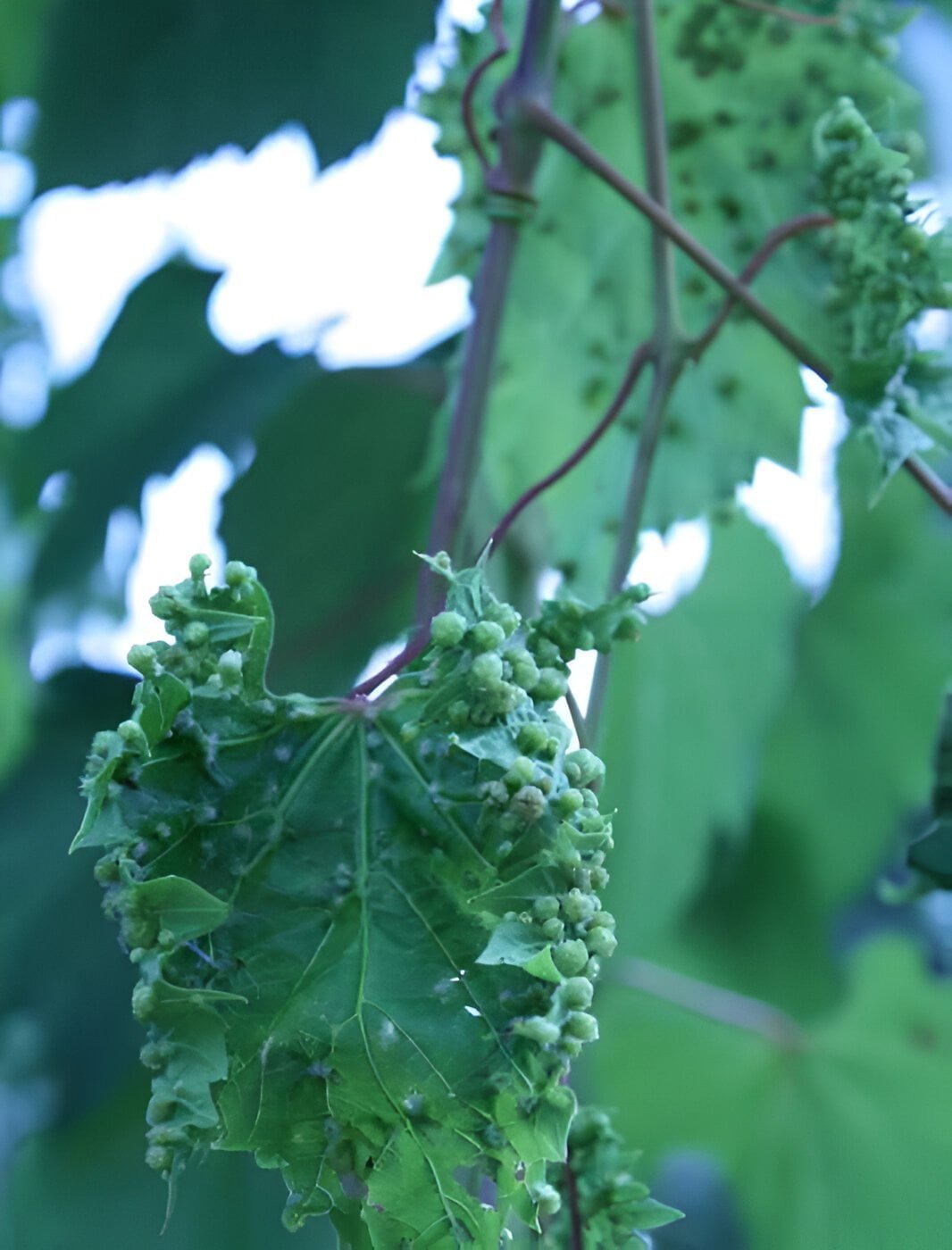
Description of the Grape phylloxera insect
A small insect with a semi-spherical body, 1.5 mm long. It has a long hair at the end of the abdomen, and small nipples are spread over the body. The general color is greenish-yellow and the color of the nipples is darker than the rest of the body. The winged individuals are green in color and their body is semi-spherical, compressed and flattened, and the middle thorax is black.
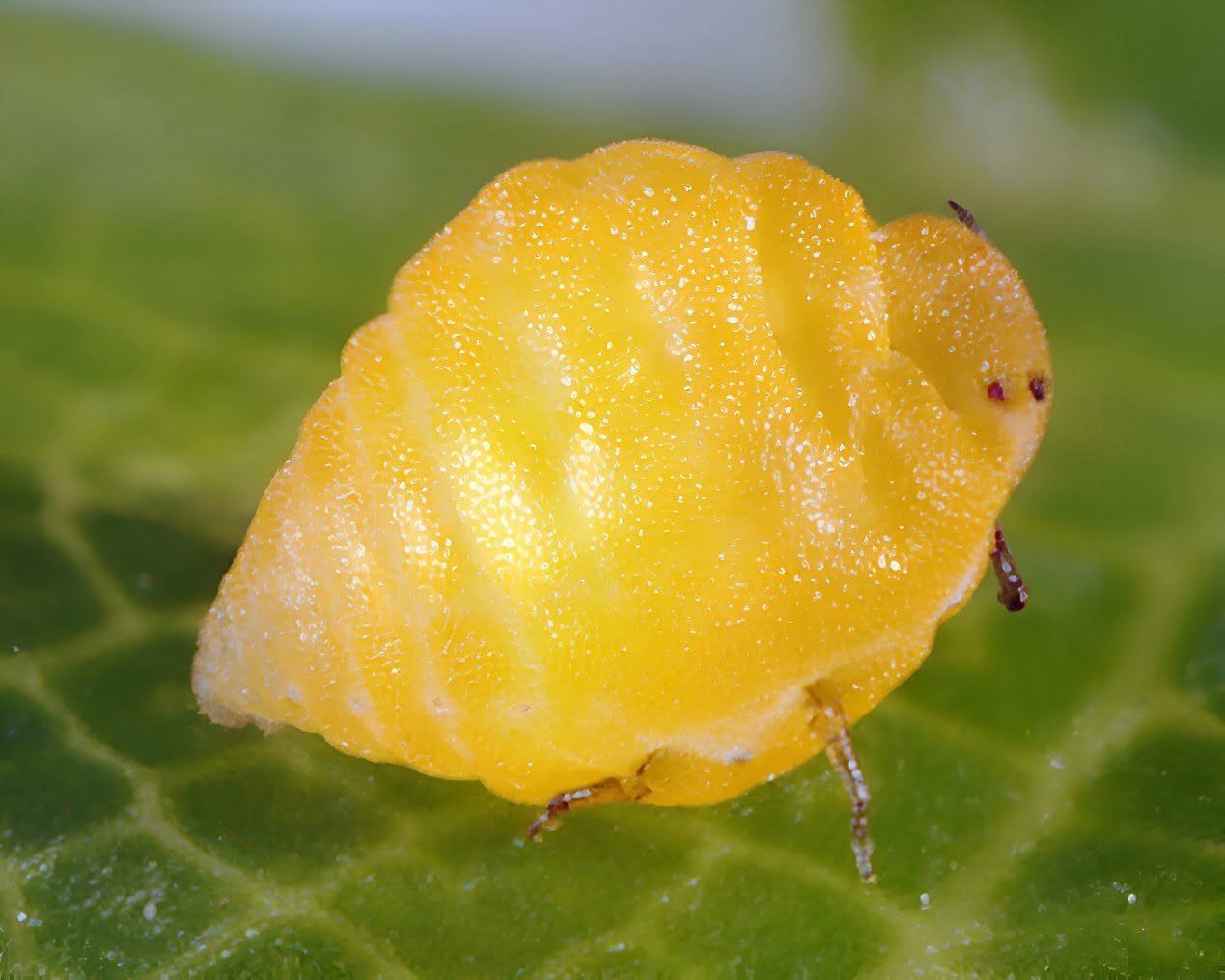
Causes of Grape phylloxera
- The infection is transmitted by infected seedlings transported from one place to another.
- Tillage and irrigation water also help transmit the infestation
- The wind helps move the winged stages from it
- Cultivation of sensitive varieties.
- The presence of weeds and plant remains in the field.
Suitable conditions for the spread of Grape phylloxera
Humidity: Clay soil is more likely to crack when it dries, making room for insects to migrate, while this is difficult in soft sandy soil because it does not crack.
Development cycle of Grape phylloxera
- Mating occurs at the end of summer, and females lay a single egg (on the trunks) called the winter egg. This egg is yellow at first, then turns green during the winter, and hatches in the spring to give wingless individuals. It is always female. It infects the roots and is called the root phylloxera, although it can The leaves are sometimes infected, causing the well-known warts. These individuals can molt three times in three weeks before they become adults, then lay 40-100 eggs and have 5-6 generations (in France) until the summer, when they give females that turn into winged phylloxera pupae, so that the latter can lay them. Eggs on buds and leaves, where these eggs hatch and produce males and females. Females only live a few days until mating and laying winter eggs.
Grape phylloxera propagation losses
- It is of high economic importance because it may lead to the death of entire trees
- Weaken the plant and increase the chance of contracting fungal and bacterial diseases.
- The infection causes stunting of the plant and reduces its productivity, and as the infection progresses, the infected trees die
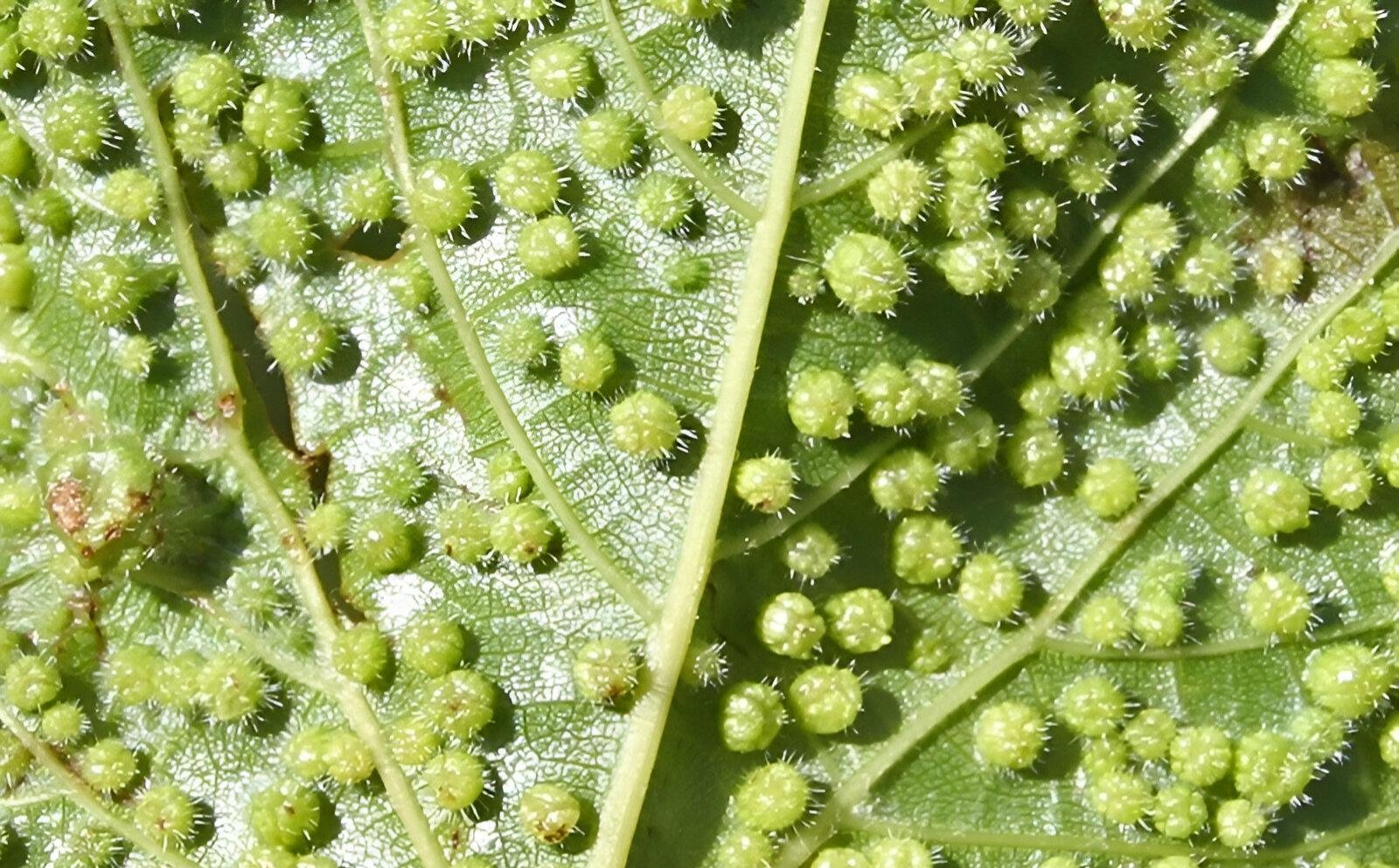
Grape phylloxera control strategy
Preventive measures to prevent the occurrence of Grape phylloxera
- Choose the appropriate land for planting the vine. The vine that grows in light sandy soil is less susceptible to infection than the one that grows in heavy clay soil.
- Planting seedlings grafted on tolerant and resistant rootstocks. Grafted vines can be grown on insect-resistant American rootstocks such as B41, Rogeri, Rockall, and Richter.
- Remove infected trees and plants and burn them.
- Good and frequent cultivation, which prevents the formation of cracks in the soil, making sure to wash tillage tools and packing boxes well before they enter the vines.
- Sterilize the seedlings before planting them in hot water for 5 minutes at 43°C, then place them in cold water.
- Do not move infected seedlings from one place to another. Avoid introducing machinery from infected fields to healthy fields
- Good fertilization and balanced irrigation.
Chemical and organic control recommendations for Grape phylloxera
- Organic control
- It is recommended that vine plants be sterilized with methyl bromide, hydrogen cyanide, or phostoxin for a period of no less than 30 minutes.
- It is possible to plant resistant American rootstocks next to the infected varicose veins and then graft them onto the stem of the infected varicose tree after a year or two, so that the shoot is separated from its infected root after successful grafting. This method is useful in eliminating the long time required for breeding and obtaining new grape vines.
- Chemical control:
- Pesticides used to control aphids such as Zenit, Aktar, Chase, and Confidor can be used. The first spraying is carried out in the month of May after the eggs hatch and pustules begin to appear, and the second spraying is carried out when the pustules appear clearly on the leaves. A third spraying can also be performed if necessary.
- Treatment using carbon sulfur, where the substance is injected into the ground at a depth of 20-30 cm in an amount equivalent to 18-20 grams per square meter several times. A device called Opal is used for injection. This method is often used to delay the spread of the insect.
In conclusion, we would like to note that we, at the world of plants website, offer you all the necessary services in the world of plants, we provide all farmers and those interested in plants with three main services::-
- Artificial intelligence consulting service to help you identify diseases that affect plants and how to deal with them.
- Blog about plants, plant diseases and care of various crops ... You are currently browsing one of her articles right now.
- An application that provides agricultural consultations to clients, as well as a service for imaging diseases and knowing their treatment for free – Click to download the Android version from Google Play Store، Click to download the IOS version from the Apple App Store.
References:
- Powell, Kevin, “Grape phylloxera: An Overview”. In Root feeders An Ecosystem perspective (Eds S.N. Johnson & P.J. Murray) CAB International 2008
- Blackman & Eastop list 16 species of aphid as feeding on common grape vine (Vitis vinifera) worldwide, and provide formal identification keys (Show World list). Of those aphid species, Baker (2015) lists 10 as occurring in Britain (Show British list).
- Nazer, I. K., Al-Antary, T. M., & Abu Jbara, R. (2006). Chemical Control of Grape Phylloxera Daktulospharia (Viteus) vitifoliae Fitch.(Homoptera: Phylloxeridae) Using Three Chemical Soil Treatments. Jordan Journal of Agricultural Sciences, 2(4).
- Daktulosphaira vitifoliae (=Viteus vitifoliae) – influentialpoints
- Chemical Control of Grape Phylloxera Daktulospharia (Viteus) vitifoliae Fitch. (Homoptera: Phylloxeridae) Using Three Chemical Soil Treatments. – ebsco




